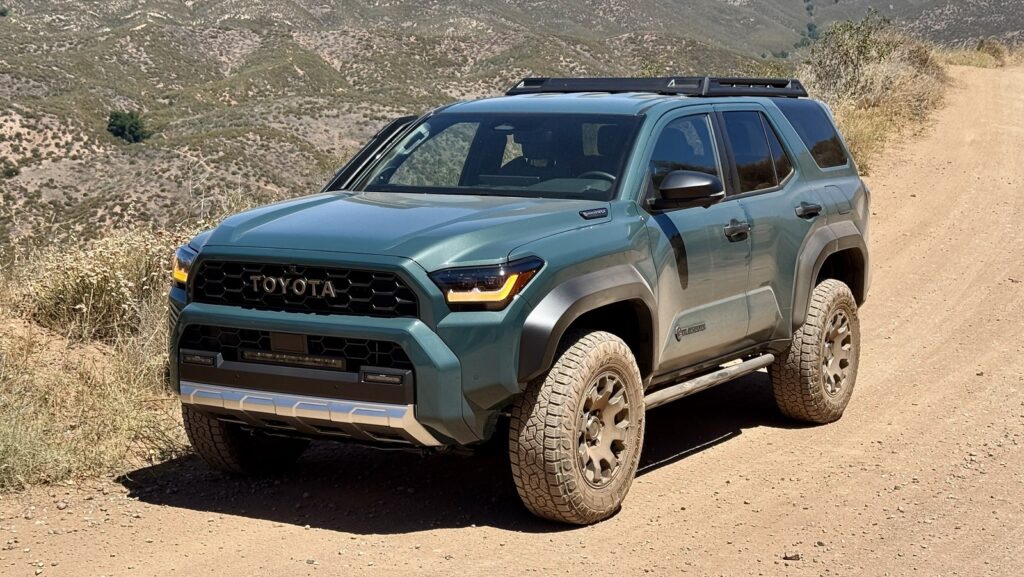
The recent redesign of both the Toyota 4Runner and Land Cruiser has brought renewed interest among off-roading enthusiasts. The Land Cruiser, which returned to the U.S. market as a 2024 model after a three-year hiatus, now features the Toyota New Global Architecture (TNGA-F) platform. Its rugged yet retro styling complements its robust performance. Meanwhile, the 4Runner has also undergone a significant overhaul for 2025, sharing the same platform and showcasing updated powertrains, a refreshed exterior, and formidable off-road capabilities.
Toyota’s commitment to performance is evident in both models, making the decision between them challenging. The 4Runner offers a variety of trim levels and an optional third row, catering to larger families. In contrast, the Land Cruiser provides a more refined experience with fewer options. In a hands-on evaluation, it becomes clear that if off-roading is the primary focus, the 4Runner may be the superior choice.
Testing both vehicles reveals distinct advantages. The 4Runner comes equipped with a base 2.4-liter turbocharged four-cylinder engine producing 278 horsepower and 317 lb-ft of torque. The upgraded i-Force Max engine includes a hybrid system, increasing power output to 326 hp and 465 lb-ft of torque. This performance matches that of the Land Cruiser, which exclusively features the hybrid powertrain. Both SUVs benefit from the hybrid’s added torque, enhancing off-road performance and on-road acceleration.
Off-Roading Capability: A Detailed Comparison
When assessing off-road capabilities, approach and departure angles play a crucial role. The Land Cruiser excels in this area, boasting an approach angle of 32 degrees and a departure angle of 22 degrees. In comparison, the base trims of the 4Runner offer angles of 18 degrees for approach and 22 degrees for departure. However, the higher trims of the 4Runner, such as the TRD Pro and Trailhunter, improve these figures to 33 degrees and 24 degrees, respectively. This slight edge can prevent obstacles from hindering progress on challenging trails.
Ground clearance is another vital metric; the Land Cruiser offers 8.7 inches, while the top trims of the 4Runner provide a notable 10.1 inches. This difference can significantly impact off-road performance by reducing the risk of damaging the vehicle’s underside.
The Land Cruiser is straightforward in its offerings, available in just two trim levels, with the base model starting at $58,195 (including a $1,495 destination fee). The upper trim is priced at $62,965 and includes features such as Rigid fog lights, roof rails, a power liftgate, and a larger 12.3-inch infotainment screen. Importantly, both trims include essential off-road features, including skid plates and full-time four-wheel drive. The upper tier additionally offers Toyota’s Multi-Terrain Monitor, a 360-degree camera useful for navigating trails.
On the other hand, the 4Runner provides a more customizable experience. The base model, the SR5, starts at $42,765, but it comes with rear-wheel drive, which may not be ideal for off-roading. Higher trims like the TRD Off-Road, TRD Pro, and Trailhunter include significant off-road enhancements. These upgrades feature all-terrain tires, added skid plates, unique bumpers for improved clearance, and specialized shock absorbers. For serious off-road enthusiasts, the price of top trims, such as the TRD Pro and Trailhunter, reaches $68,895 but is seen as a worthwhile investment for enhanced capability.
The choice between the 4Runner and Land Cruiser ultimately hinges on individual preferences and usage. Both vehicles showcase Toyota’s engineering excellence, but their different approaches to off-roading provide distinct experiences. For those seeking maximum off-road performance with a customizable setup, the 4Runner stands out. Conversely, the Land Cruiser offers a more refined and comprehensive package, making it an attractive option for those prioritizing luxury alongside capability.







